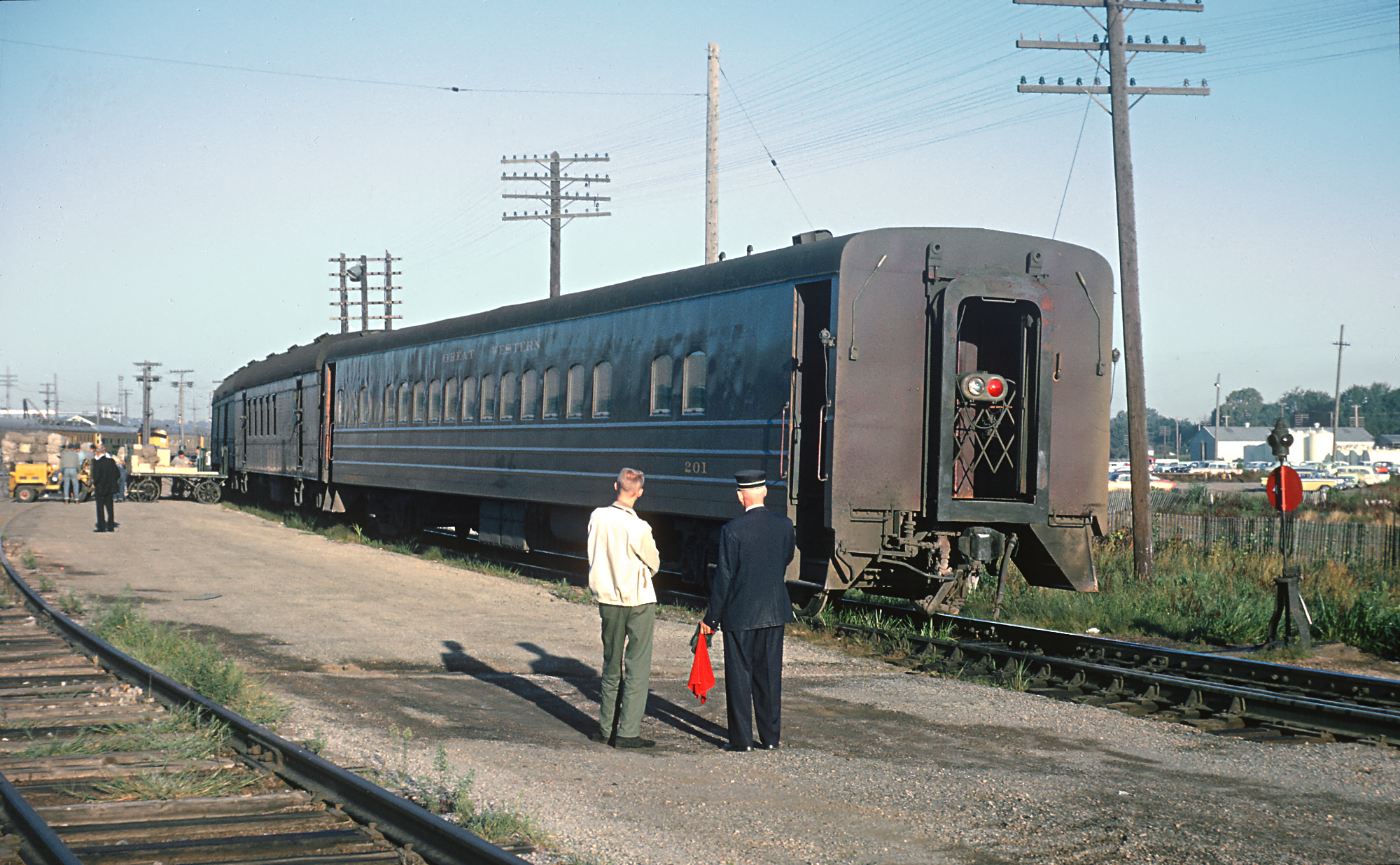- Home ›
- Dinner Trains ›
- Iowa
Iowa Dinner Train Rides: A Complete Guide
Last revised: January 10, 2025
By: Adam Burns
The state of Iowa has an fascinating history with the iron horse. It has largely been "flyover" country for railroads as freight and passenger trains hustled east and west between Council Bluffs/Omaha and Chicago.
However, it has also been vitally important, and remains so in the production of agriculture. Today, only the Boone & Scenic Valley Railroad, located in Boone, offers dinner train rides in Iowa. The organization works hard to recreate the experience using former Union Pacific cars and equipment painted in Union Pacific colors.
Historically, the state was once home to five main lines reaching Omaha, the traditional connection point to Union Pacific's eastern terminus, which was part of America's first transcontinental railroad to the west coast.
These railroads included the Chicago & North Western, Milwaukee Road, Illinois Central, Rock Island, and the Chicago Great Western. While all five railroads provided their own trains linking various towns in Iowa with Chicago, and other points, the C&NW and Milwaukee Road's are the best remembered.
During their last great period of prosperity, from roughly 1946 - 1956, each railroad maintained double-tracked main lines between Omaha and Chicago. The C&NW handled Union Pacific's top "City" trains, and other services into the the Windy City until October, 1955, which were transferred to the Milwaukee Road after that time. These included the:
- Challenger: (Chicago - Los Angeles)
- City of Denver: (Chicago - Denver)
- City of Los Angeles: (Chicago - Cheyenne - Los Angeles)
- City of San Francisco: (Oakland - Cheyenne - Chicago)
- Forty-Niner: (Chicago - Oakland)
- Gold Coast: (Chicago - Oakland/Los Angeles)
Union Pacific's passenger services were on par with the Santa Fe's in the west; no expense was spared in providing passengers with the very best in accommodations. The railroad also maintained its trains to high standards until the very end when Amtrak took over most intercity services across the country on May 1, 1971.
The City of Los Angeles is often regarded as UP's top train, competing directly with Santa Fe's Super Chief between Los Angeles and Chicago. Both trains also often carried many celebrities of the era and other dignitaries.
A sampling from the City of Los Angeles dinner menu in 1961 offered the following main course dishes:
- Mountain Brook Trout with Sauté Meuniere
- Fried Spring Chicken, a la Maryland
- Charcoal Broiled Ham Steak, Hawaiian Style
- Roast Prime Rib Of Beef, au Jus
- Charcoal Broiled Steak
- Deluxe Dinner Salad Bowl with Shredded Chicken and Ham, or with Fresh Jumbo Shrimp
They also offered various soups and sides long with the following desserts:
- Strawberry Shortcake with Whipped Cream
- Butterscotch Sundae
- Cherry Burgundy Sundae
The information below briefly highlights the Boone & Scenic Valley Railroad.
 Chicago Great Western chair car #201 brings up the end of train #13 at Council Bluffs, Iowa on August 8, 1962. Roger Puta (left) and the conductor (right) can be seen in the foreground. Walt Dunlap photo.
Chicago Great Western chair car #201 brings up the end of train #13 at Council Bluffs, Iowa on August 8, 1962. Roger Puta (left) and the conductor (right) can be seen in the foreground. Walt Dunlap photo.Overview
Boone & Scenic Valley Railroad
(Boone): The Boone & Scenic Valley offers three different dinner-style trips including the Wolf Lunch Train, Wolf Dinner Train, and the Wolf Picnic Train.
The two former trains provide a full-course meals aboard either their fully restored, climate-controlled cars "City of San Francisco" or "City of Los Angeles." Both cars can trace their heritage back to the Union Pacific.
The Picnic Train offers guests the chance to pack a lunch while enjoying a trip through the Des Moines River Valley.
The Boone & Scenic Valley began in 1983 when a group of train enthusiasts formed the Boone Railroad Historical Society to preserve an 11-mile segment of the Fort Dodge, Des Moines & Southern from abandonment by then-owner Chicago & North Western.
The track runs to the west of Boone with trains departing from the restored FtDDM&S depot that originally sat in Napier. The top attraction along the B&SV is two trestles, one crosses the Des Moines River while the other, and more spectacular, passes high above the Bass Point Creek Canyon.
This bridge is often photographed by railfans and is regularly featured by the railroad. Historically, the FtDDM&S was an interurban, dating back to its founding in 1905. Much of the system was electrified soon after and operated between Fort Dodge, Des Moines, and Webster City with a few small branches.
While most interurbans relied heavily on passenger/commuter business, the "Fort Dodge Line" was always maintained a healthy freight business, allowing it to survive the interurban collapse of the 1930s. It was acquired by the Chicago & North Western in 1968 which promptly abandoned most of the network.
Recent Articles
-
Kankakee Belt Route, NYC's Illinois Division
Dec 08, 25 12:25 AM
The Kankakee Belt Route was one of the Midwest’s most interesting “quiet” main lines—a strategic bypass around Chicago that never became a famous name in its own right. -
Oregon Christmas Train Rides In Sumpter!
Dec 07, 25 11:37 PM
Among the Sumpter Valley Railroad's most popular offerings each year are the Christmas Trains, beloved family outings that blend history, holiday cheer, and vintage railroading in an unforgettable way… -
Ohio Polar Express Train Rides In Dennison!
Dec 07, 25 11:24 PM
Tucked into the small town of Dennison in eastern Ohio, the Dennison Railroad Depot Museum preserves a remarkable slice of American history while delivering one of the region’s most beloved holiday tr…



